
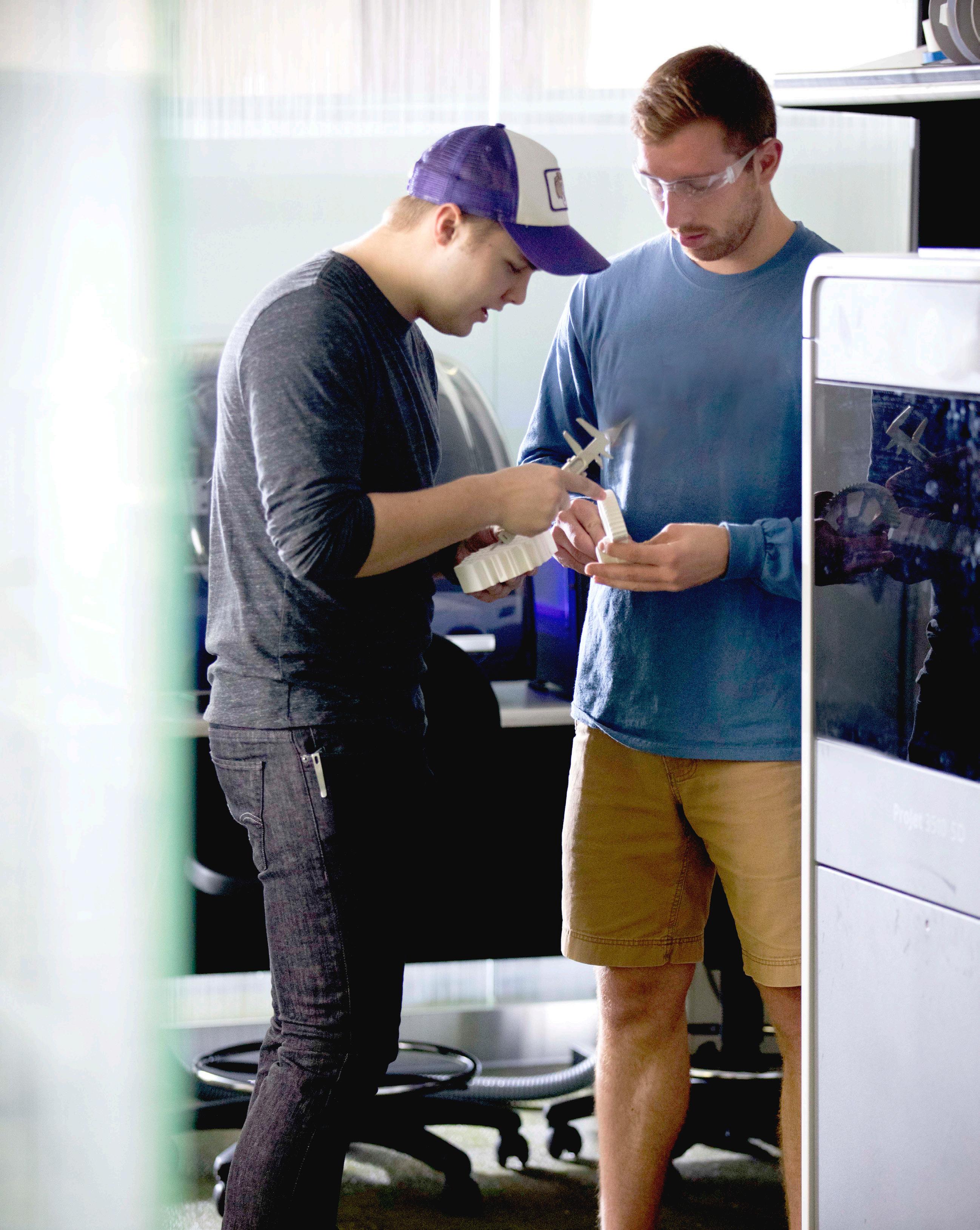



Letter from the Dean P3
Accomplishments and Awards P4
Professorship in Geology P6
Swanberg Biology and Engineering Project P7
Engineering Senior Projects P8
Engineering Awards P14
Pence-Boyce Undergraduate Summer Research P15
Programs at a Glance P17
Where Earth Meets Sky P18
Conferences and Events P22
Olivet + vCalc: Empowering Problem Solvers P26
Faculty Publications P29
STEM Faculty P30
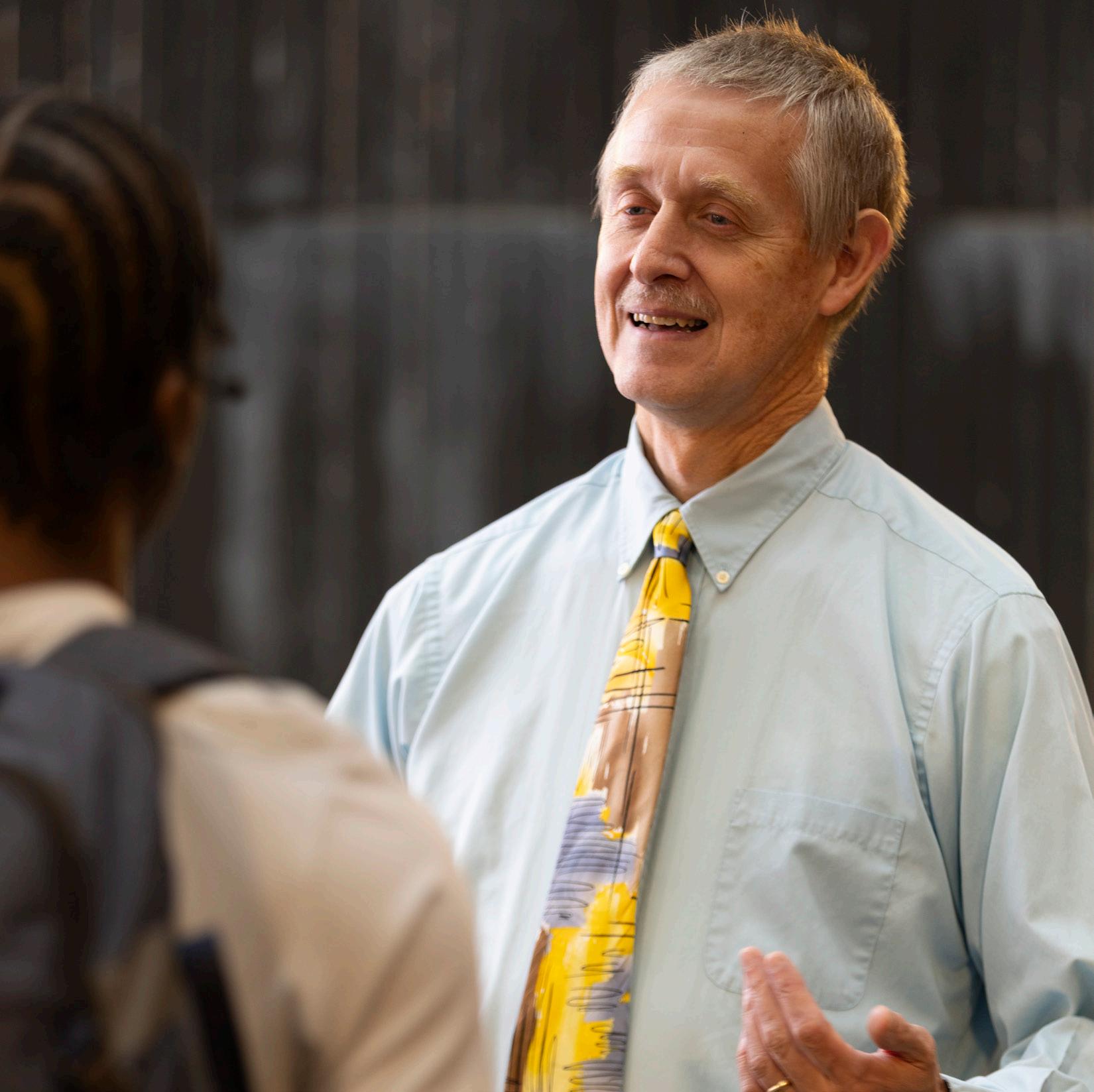
Dr. Dale K. Hathaway, Associate Dean of the Martin D. Walker School of STEM
Dear Friends,
This is the third annual issue of the STEM Magazine from Olivet Nazarene University! It is my hope that this finds you well, not only physically and financially, but also spiritually. This is a challenging but exciting time for the Martin D. Walker School of STEM, and we want you to know some of the many positive things that are happening every day at Olivet.
The School of STEM is thriving — not only in terms of enrollment numbers, but also in terms of prominence, accomplishments and achievements. Our faculty, staff and students are all outstanding. In this issue, we want to highlight some of this excellence.
For those who have supported our programs, we highlight some of the ways in which that support has impacted students’ experiences
and changed lives. A huge THANK YOU for your support! Know that you are truly making a difference in our students’ educational and life experiences.
Several departments have had students benefit from attending professional conferences and meetings. These are wonderful events for students to network with professionals beyond Olivet in addition to finding opportunities for their own professional future. They will go further professionally because of the support you have provided.
In this issue, we also focus on the overall quality of our students,
Know that you are truly making a difference in our students’ educational and life experiences.
faculty and alumni with an expanded Awards and Accomplishments section. On the next page you will find quality markers ranging from students who are winning external awards and going on to pursue graduate studies, to faculty members who are writing books and attending exclusive workshop/fellowship opportunities, to alumni who are receiving various types of recognition — even from the President of the United States! All this is just from the past year. The cumulative impact over time is astounding.
Let’s celebrate this impact and thank God together. “May the Lord bless you from Zion; may you see the prosperity of Jerusalem all the days of your life” (Psalm 128:5).
Sincerely,
Dale K. Hathaway, Ph.D.
BEN DAY ’25 AND KOLLIN GALLEGOS ’25
(both from Engineering) tied for first place with the team from Milwaukee School of Engineering team in the Coding competition at the IEEE Region 4 NEXUS Conference in Milwaukee, Wisconsin, November 2024
KYLE TAYLOR ‘25 (Chemistry) received an award from the local American Chemical Society (ACS) section in biochemistry for his scholarly research experiences and his high GPA.
KYLE WEEKS ’25 (Mathematics), outstanding graduate, Department of Mathematics
JILLIAN BECKSFORT ’25
“Characterization of the Current Tallgrass Prairie Plant Communities and the Effect of Burning and Mowing on Prairie Plant Communities at the Swanberg Sanctuary” –Winner of the Pence-Boyce Poster competition Homecoming 2024
ANNA SHOUP ’25
(Environmental Science and Philosophy) received the inaugural Mike and Karen Pence Award for Law (given to a student pursuing graduate legal studies)





GRANT WHEELER ’26 (Chemistry) had his photograph featured in Chemical and Engineering News, November 9, 2024
DEPARTMENT OF ENGINEERING won a $10,000 award from NCEES for its submission, “Shine.FM Renovation and Addition”
CHEMISTRY DEPARTMENT Partners with Local Law Enforcement for Drug Analysis. The department developed a protocol to analyze products for THC for the Village of Bradley.
JILLIAN BECKSFORT ’25
Biology, University of Cincinnati, Ph.D. Program in Molecular Genetics
CAM COTNER ’25
Biology, Kansas City University, College of Osteopathic Medicine, D.O. (Doctor of Osteopathy)
KYLE TAYLOR ’25
Biochemistry, Purdue University, Ph.D. Interdisciplinary Life Science Program
MATTIGAN YUSKA ’25
Biology, Trevecca Nazarene University, Physician Assistant Master’s Program.


published a book, “Letters from a WWII Airman: How His Faith Sustained Him” from Kharis Publishers.
JEREMY LYLE (Mathematics) was accepted at and attended the Institute for Advanced Studies/ Park City Mathematics Institute on “Probabilistic and Extremal Combinatorics”. A three-week residential summer program in Park City, Utah, sponsored by Simons Foundation and the NSF.
DR. TERESA WOODRUFF ’85 (Biology & Chemistry) Awarded the National Medal of Science at the White house on January 3, 2025 by President Biden
DR. CAMILO GIRALDO ’14 (Engineering) Received the Young Alumni Award at Olivet’s 2024 Homecoming
DR. ANTHONY HOOVLER, MD ’88 (Biology) Received the 2024 Lay “O” Award at Olivet’s 2024 Homecoming
MACY SPRUNGER (Chemistry) Doctoral Student Speaker, Arts & Sciences Graduate Studies Hooding and Recognition Ceremony, Washington University in St. Louis
Biology, University of Illinois, School of Medicine, M.D.
KEITH GALLEGOS ’23
Mathematics, M.S. in Mathematics from Oregon State University
SIMON SPIVEY ‘21
Engineering, M.S. in Electrical and Computer Engineering from Carnegie Mellon University


DR. MAX REAMS earned many distinctions during his time at Olivet Nazarene University. One of those was being Olivet’s longest tenured faculty member. Hired in 1967 to teach Geology, he retired 50 years later in 2017. At that 2017 graduation, Dr. Reams was awarded an Honorary Doctorate of Letters by Olivet.
While at Olivet, Dr. Reams founded the Department of Geology and served as its chair. He also served as chair of the Natural Science Division, the precursor to the current School of STEM. His wife, Carol, was a long-time employee in the Registrar’s Office at Olivet.
At the time of Dr. Reams’ retirement, then-University President John C.Bowling announced the goal of creating a Chair in his honor. The creation of the Dr. Max and Carol Reams Professorship is a significant step in that direction with the hope that the Chair position will be fully funded within 10 years. This Professorship will help to support Geological Sciences, currently housed in the Department of Chemistry and Geosciences at Olivet.
Special thanks to many of our alumni and friends of the program, who have decided to take the very generous step and make a gift to this worthy cause. So many people are remembering the incredible impact that Max and Carol had on their lives and choosing to honor their legacy. We are delighted and praising God for these blessings!
We will celebrate their legacy and the establishment of this endowment at Homecoming & Family Weekend 2025 on Saturday, October 18. We will honor their lives, showcase the exciting accomplishments of students in the program, and share a vision for the future of Earth and Space Sciences at Olivet.

This project was made possible with financial support from The McGraw Fund (solar) and Catalyst ONU (rain catchment).
Written by Dr. Dan Sharda

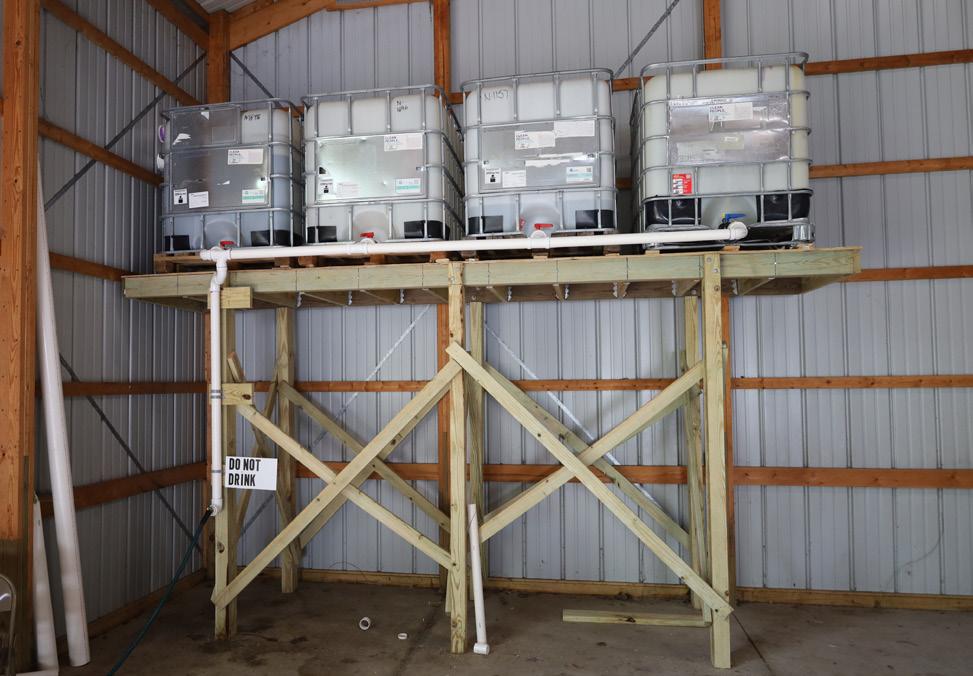
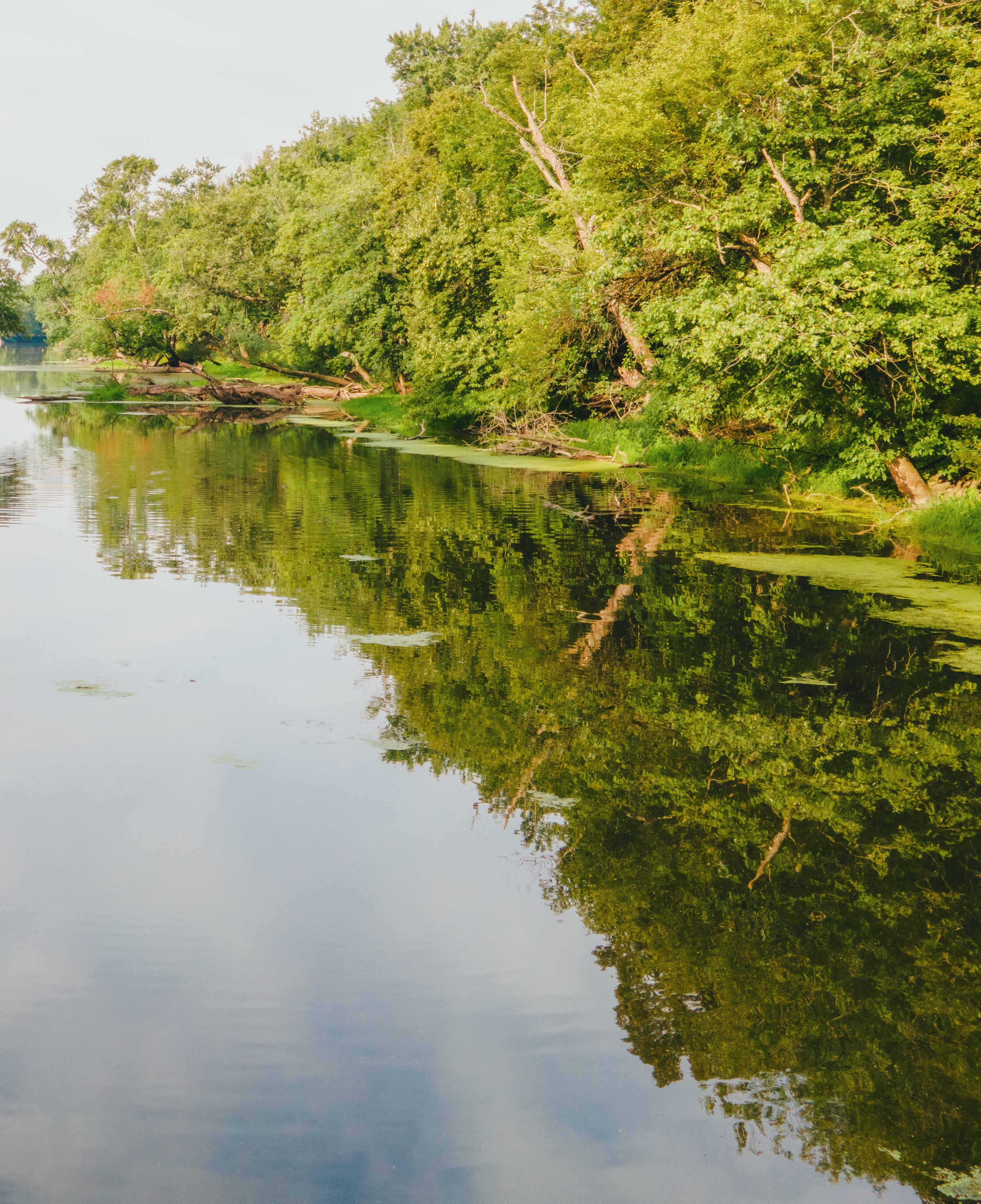
The Biology Department continues to enjoy educational and research opportunities out at the 100-acre Swanberg Biological Sanctuary. Despite its rich natural resources, the site has faced two major limitations: the absence of electricity and access to clean, non-potable water.
This past year marked a significant leap forward, thanks to a collaboration with senior engineering design students. Jacob Beardsley, Luke Whitis, and Cristian Gutierrez worked closely with both biology and engineering faculty throughout the year to assess needs and develop practical solutions.
The team’s first accomplishment was the design and implementation of an off-grid solar power system, complete with battery storage for backup. The system was carefully engineered to meet the demands of routine fieldwork and larger events— such as the annual departmental barn party. With electricity now available, the site can support essential equipment like electric chainsaws, power tools, and lighting, dramatically improving functionality and safety.
The second phase of the project addressed water availability. The students designed a rain catchment system that can hold over 1,000 gallons of water from the barn’s existing gutter system. Elevated storage totes inside the barn provide gravity-fed water pressure, making it easier to clean up after field labs and maintain a reservoir for controlled prairie burns.
Thanks to these improvements the Biology Department is greatly looking forward to new possibilities out at the Sanctuary this year!
The Senior Design Project I and II courses are considered the capstone experience for engineering majors. They are the culmination of the engineering program at Olivet. This twocourse sequence gives students the opportunity to demonstrate their engineering knowledge and skills in a single and focused work/ academic experience.
During Senior Design Project I, student teams develop a proposal and initial design solution. During Senior Design Project II, student teams finalize the design documentation and implement the design. The capstone experience provides an opportunity for seniors to demonstrate advanced knowledge and expectations in all seven of the Engineering Student Outcomes.
Projects are often presented to the engineering department from local industry contacts, national competitions, community service projects, global mission projects, engineering department needs, and Olivet concerns. The engineering faculty, with support from industry partners, alumni employed in industry and consulting fields, local government entities, and partners with the same Christian vision as Olivet, select projects and assign students to teams based on a sorting process that accounts for

student interests, engineering concentration, strengths, and weakness. Each team is assigned a faculty mentor.
After project team assignment, students begin team norming, establishing a project team structure, and setting a regular work schedule. They must complete a sponsor site visit and initial research to quickly develop a problem statement to define the project requirements, design objectives, and constraints. The work schedule should include at least 8 hours per week.
Students are expected to spend 10-12 hours per week on the project and course requirements, including on-campus design work and meetings, visits and communications with the sponsor, FE review, research, and project documentation. More hours will typically be required during heavy project implementation, review, and writing tasks. Teams are required to meet each week with their faculty mentor, who may assist with project management, technical consulting, directing the team in requesting project resources, and maintenance of course requirements and project documentation.
Students are expected to maintain a project design journal for recording progress, ideas, sketches, phone conversations, decisions made, actions taken, plans, goals, key contact information, work hours, etc. Journals are submitted periodically for review to faculty mentors as directed.
SPONSOR
Project Manager: Troy Lovell
DESCRIPTION
A tiny house was designed and constructed for HOPAN ministries in Chicago to house a homeless person. Additional uses of the house include temporary refugee housing, temporary field missionary housing, and temporary disaster relief housing. The house is modular and lowmaintenance and has a life-expectancy of ten years. The house components were sourced at local building supply businesses. The house can be recycled after it is spent. Dr. Seok Lew with the Engineering Department is credited with helping initiate the project with HOPAN. HOPAN contributed financially to this project.
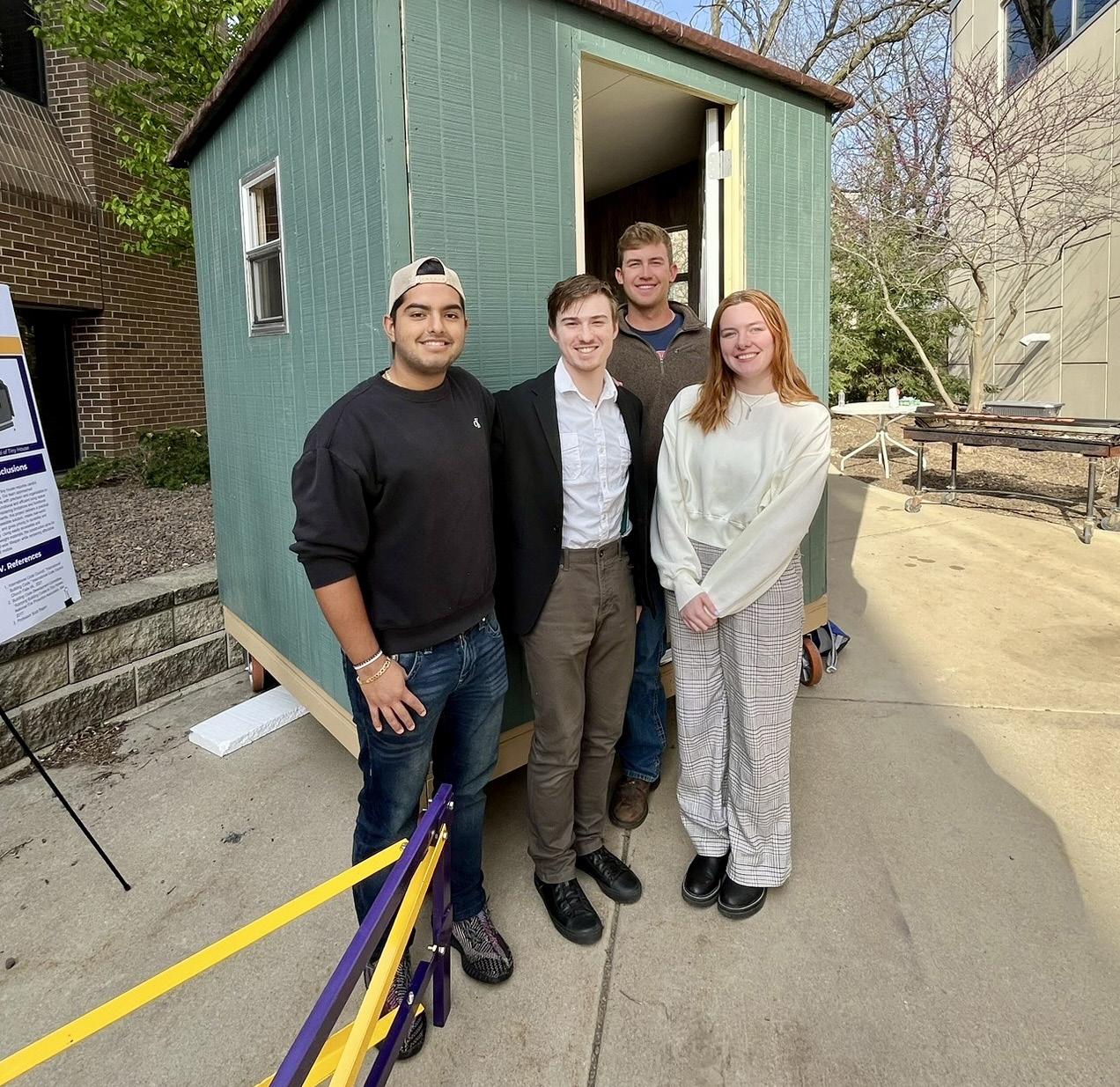
PROJECT
SPONSOR
DESCRIPTION

Experimentation was performed on behalf of CSL Behring, a manufacturer of life-saving biotherapy products from human plasma. Using Computational Fluid Dynamics (CFD), the mixing of the plasma with other fluids was modeled at three different scales to determine the optimum time and rate for fluid mixing and heat transfer, thus improving the use of the human plasma for medical care. A generous financial gift was provided by CSL Behring for the furtherance of this project.
SPONSOR
Peddinghaus
DESCRIPTION
Prof. Agajanian/Weber
Project Manager: Troy Lovell
A system was developed for allowing the automated changing of plasma cutter cartridges for robotic arms at the Peddinghaus facility in Bourbonnais, IL. The cartridge changing system allows the robotic arm to insert an old plasma cutter cartridge into the changer, rotate the cartridge off the arm, allow the arm to reposition to a new cartridge, then rotate a new cartridge onto the arm. Cost savings and efficiency were the primary objectives. A generous financial gift was provided by Peddinghaus for the furtherance of this project.
PROJECT
SPONSOR
BUV Ministries
DESCRIPTION
Ricardo Bonner, Kollin Gallagos, Thomas Robinson

Prof. Lew/Katongera
A turbocharger was designed and added to the aircooled diesel engine on the Basic Utility Vehicle (BUV) manufactured by DriveBUV of Indianapolis, Indiana. The BUV is used in rural Africa to provide reliable transportation for food delivery and pick-up, medical care, and other services. The vehicle is designed for harsh terrain and climates. However, the air-cooled engine can be underpowered; thus the increased power of the turbo charger improved the use of the BUV. A headlight and cargo lighting were also added to the BUV as part of this project. DriveBUV generously provided a BUV to Olivet for this project as well as future projects for the BUV.
Olivia Lorenc, Payton Millhouse, Zachary Petro, Jacob Tupper

SPONSOR

The Swanberg Sanctuary is an environmentally protected area along the Kankakee River near Momence, IL that was donated to Olivet. It features one hundred acres of woods and prairie for biological study of plant life, insects, birds, etc. However, infrastructure, particularly water and electricity, were limited at the site, but water and electricity from traditional, grid-connected services were not desired. Thus, Olivet’s Biology and Engineering departments partnered together to develop sustainable water and electricity sources in the form of water harvesting through roof gutters and solar panels on the roof of a shop building on the site. The water harvesting system provides up to 1,500 gallons of water through three elevated water tanks inside the building that are fed from piping from the roof gutters. The solar panels and a battery storage system provide electricity to charge batteries for hand-held power tools as well as lighting at the sight. The McGraw grant at Olivet helped fund this project.
PROJECT
SPONSOR DESCRIPTION
DESCRIPTION

Each year, Olivet’s Engineering Department develops an off-road vehicle to compete in the Society of Automotive Engineers (SAE) Baja Competition held in the United States. Stringent rules must be adhered to for this competition, and testing and validating of the vehicle is required at competition before competing in the various activities, such as an endurance race and an off-road competition. This year, the students redesigned the entire vehicle, The competition is in Maryland. Walker Manufacturing of Fort Collins, Colorado, Meineke of Bourbonnais, IL, and many other doners contribute to the cost of building the vehicle.
SPONSOR
American Institute of Steel Construction (AISC)
DESCRIPTION
Prof. Ragan
Project Manager: Troy Lovell
Chris Boden, Levi Dale, Jacob McDonald, Hector Romero, Connor Wimmer
For the second year, Olivet’s Engineering Department designed and constructed a steel bridge in accordance with the rules of the steel bridge competition sponsored by the American Society of Civil Engineers (ASCE) and the American Institute of Steel Construction (AISC). The competition is held each spring at numerous student symposiums throughout the country. The bridges are judged for aesthetics, strength, deflection, and other criteria. Olivet’s bridge was designed, fabricated, and constructed by the students. Donations for the project were solicited by the students from numerous sources, including companies who sponsored internships for the students involved in the project.

SPONSOR
SHINE FM
DESCRIPTION
Prof. Ragan
A group of Architectural Engineering students designed a building addition to the SHINE FM radio station building on the Olivet’s campus. The design included new offices, a performance space, and a common area, improving the radio station’s ability to increase personnel and offer radio and theatrical performances in the new building. The students were required develop architectural, structural, mechanical, electrical, and plumbing and fire protection drawings and specifications. The project was submitted to the National Council for the Examination of Engineers and Surveyors (NCEES) design competition held each spring. Notification of winners of the competition occurs in June each year.
Bas De Vries, Lucas Eckles, Kaitlyn Holb, Anthony Lopez, Emily Neel

SPONSOR
Prof. Weber/Agajanian
Project Manager: Troy Lovell
Braun, Matthew Cousino, Benjamin Day, Deshon Scott
PROJECT
SPONSOR DESCRIPTION
A conveyor system was designed and developed for the VanFab company of Herscher, IL to increase production of circular flanges for large spools for transport of electrical wiring. The new conveyor system increased the assembly of the circular flanges by automating a previously hand-made product. The conveyor system had six stations, including a glue station and a drill station for a hole in the center of the spool flanges. A generous financial gift was provided by Van Fab for the furtherance of this project.

Prof. Schroeder
Project Manager: Troy Lovell
Rebecca
DESCRIPTION

An automatic fish feeder was designed and developed for the Aginno Institute in Guatemala for the El Puente Mission. The fish feeder automates the feeding of Tilapia fish for those partnered with the El Puente Mission. The feeder discharges food based on pre-set amounts. The amount of feed needed is input into an interface panel on the feeder. The Olivet students designed the fish feeder, then transported the feeder and installed it during the week of May 11-18, 2025. This trip provided a missional and international experience for the students. The McGraw grant at Olivet helped fund this project, and the Aginno Institute provided financial and housing resources while the students were in Guatemala.
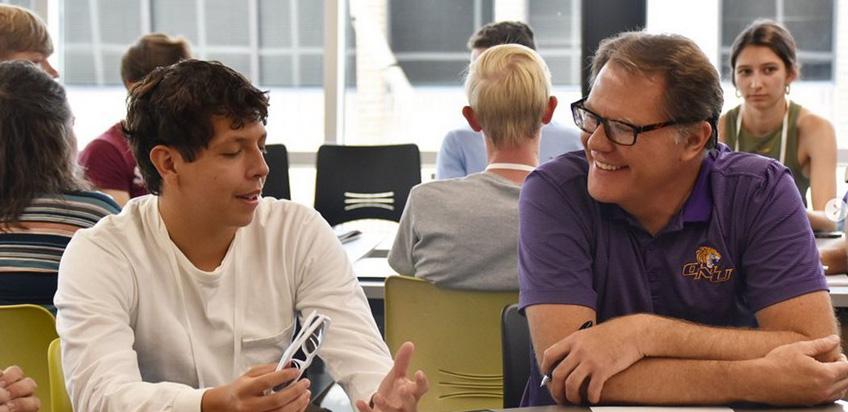
Olivet Nazarene University’s Department of Engineering has quietly been excelling in a national competition, going up against some of the best engineering schools in the country. The National Council of Examiners for Engineering and Surveying (NCEES) Education Award is an annual competition to recognize programs for their curriculum and mission to advance licensure in order to safeguard the health, safety and welfare of the public.
To put into perspective how well Olivet’s program has done, over the past four years (the only years in which Olivet has made a submission), Olivet and the University of Wisconsin-Madison are the only schools to have been recognized as some form of a winner in each of those four years.
For this competition, all of Olivet’s senior engineering students are divided into groups to collaborate on a design project. Most of these projects come from real needs presented to the Department of Engineering by local businesses. “A real-world project challenges students to consider the end user in a way that a theoretical project cannot,” says Department Chair Scott Ragan. “This requires the consideration of client needs, time constraints and buildability,”
To participate in this contest, a senior design poster, along with an abstract and a project description, is submitted to NCEES. Following are Olivet’s submissions and prizes over the past four years:
2022: Logan Nazarene Campground, winner of $10,000 award
2023: Automated Cutting and Splicing Machine, winner of $10,000 award
2024: Efficient, Affordable and Accessible House Design, Honorable Mention (the only Honorable Mention over this four-year period)
2025: Shine.FM Renovation and Addition, winner of $10,000 award
Three of these projects have fallen under the Architectural concentration, led by Professor Scott Ragan, while the fourth (2023) was under the Electrical concentration, led by Dr. Aram Agajanian. For each of the cash awards received, the Department has gifted $1,000 to each participating student.

Submitted by Dr. Stephen Case, Professor of Geosciences
For the past twenty-five years, an anonymous gift honoring two past Olivet professors has provided Olivet undergraduates the opportunity to dedicate their summer to significant research projects in mathematics or the physical sciences. The PenceBoyce summer research experience funds students pursuing full-time summer research for ten weeks under the mentorship of a faculty supervisor. Since its establishment in 2001, the Pence-Boyce program has given nearly one hundred students first-hand experience doing
fieldwork or research in the lab. This year, Pence-Boyce supported three students pursuing important work at the intersection of health and the natural world.
The Pence-Boyce Research Experience is named in honor of two former Olivet faculty members, Elbert Pence, Professor of Physics from 1962 to 1969, and Fanny Boyce, Professor of Mathematics from 1963 to 1970, both of whom exemplified excellence in higher education.
The 2025 Pence-Boyce Undergraduate Summer

FRANCESCA
BAISLER, a zoology major, worked with Dr. Parry Kietzman to survey the diversity of pollinator species found at the Olivet Nature Sanctuary, a first step in understanding the ecological health and biodiversity of the site. Baisler’s project will establish baseline information about the pollinators at the sanctuary and provide a foundation for future studies there.

AKEMI HORI, majoring in biochemistry and music, was engaged in a project with Dr. Bruce Heyen focused on an important regulatory enzyme that may be involved in disrupting cancer cell growth.Hori used a citrate derivative in this process, which could have important implications for cancer therapies.

AMY
JOHNSON, an environmental science major, worked with Dr. Charles Carrigan to analyze water samples from the Bourbonnais Creek, the major drainage conduit of Olivet’s campus, for complex organics like microplastics pollution. The findings will give insight into how the Bourbonnais watershed is being influenced by human life since pesticides, herbicides, plastics and many more organicbased products are introduced into surface waters by humans.

Biological
Sciences
Biology
Environmental Science
Science Education
Zoology
Chemistry
Chemistry Teaching
Earth and Space Science
Environmental Science
Geography
Geological Sciences
Physical Sciences
With 21 key areas of study and numerous degree and certificate options within each area, the Walker School of STEM offers the skills and opportunities to shape your future.
Engineering
Concentrations
Architectural
Civil
Electrical
Chemical & Biochemical
Computer
Mechanical
Mathematics & Computer Science
Actuarial Science
Data Science
Mathematics Teaching
Cybersecurity
Mathematics
Computer Science
GEOLOGY OF SOUTHWEST U.S. NATIONAL PARKS FIELD COURSE
WRITTEN AND SUBMITTED BY DR. CHARLES CARRIGAN, Professor of Chemistry and Geoscience

Costs of this trip were supplemented by the McGraw Student Engagement Fund, the Catalyst Fund, and the Earth and Space Sciences Special Projects Fund.


IN MAY 2025, 12 students and I loaded up our vehicles and headed west. Our first stop was Rocky Mountain National Park, just outside of Estes Park, Colorado.
As we climbed a rocky glacial moraine deposited in the last Ice Age, we sat down together. I asked the students to consider what mountains mean to them. For some of them, this was their first time seeing mountains up close, their first time west of the Mississippi. Most of them had never had such a strange question posed for their consideration.
For many of them, a mountain was an obstacle, something that loomed large over their lives, something they needed to overcome.

Fast forward, just two weeks later, and I asked them the same question. This time, we were in the shadow of the Sangre de Cristos Mountains, on the Great Sand Dunes of the San Luis Valley. Their answers were much more imaginative and creative than on that first day.
After almost two weeks of driving and hiking through the Front Range and the Colorado Plateau, they had had their eyes open to a world that was much bigger than they had known before. At this point, a mountain might still be a challenge to overcome or an obstacle in their path to avoid. But now,
a mountain is a remote place of refuge, an intense and powerful force of nature, a journey of discovery, and a sacred place where earth and sky meet.

This trip, of course, was not just an eye-opening spiritual journey. They witnessed first-hand the pages of Earth’s history opened in front of them: the stratigraphy of the Grand Canyon. They placed their hands into the depressions of mudstones where dinosaurs once roamed, comparing the size of their own fingers to the massive toes of some of these ancient beasts. They looked up into the cirques where longflowing valley glaciers, now gone, were once birthed.
Together, we climbed hardened layers of gravel that were thrust up high into the air by massive peaks. The students’ knowledge of geology solidified in their minds, as the rocks revealed their secrets in the way only scientific investigations can uncover.





Our group also saw how the land is protected by the U.S. federal government through the laws, policies and procedures that give us our National Parks and Monuments. They newly understood that there are special places worth protecting, and that it takes all of us, working together, to keep these special places in good shape. The challenges of conservation are real, but our Christian stewardship ethic invites us to lean into the difficult work of tending the garden and participating in God’s renewal of all Creation.
After seeing eight National Parks, four National Monuments, and other sites along the way, these students saw the land, and themselves, in new ways.
That transformative education is what Olivet Nazarene University STEM programs are all about.
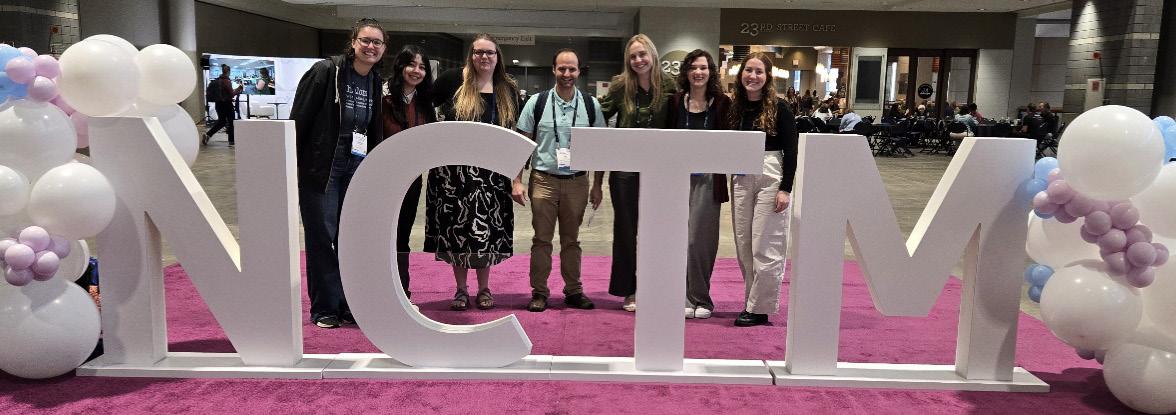
Written and submitted by Dr. Darl Rassi, Associate Professor of Mathematics
FOR SEVEN eager mathematics education students, a trip to the National Council of Teachers of Mathematics (NCTM) Annual Meeting in Chicago on September 26, 2024, was an opportunity of a lifetime—especially since this prestigious event was last hosted in Chicago 25 years ago.
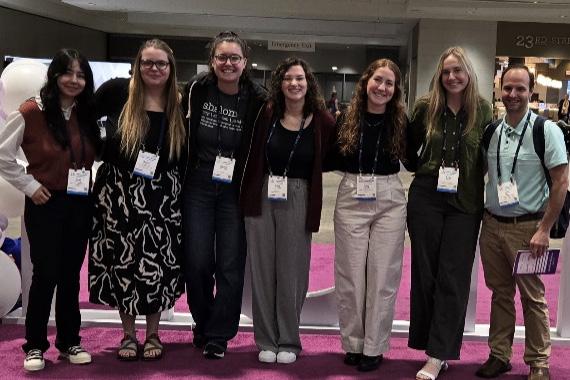
Lesli, Brenna, Grace, Haley, Karly, and Hannah—all students in Professor Rassi’s middle and secondary math teaching methods course, traveled to the Windy City supported by the McGraw Student Engagement Fund. With over 6,000 attendees and 600 sessions, the conference was a mathematics educator’s dream—an endless array
of innovative teaching strategies, groundbreaking research, and, of course, plenty of pi(e) charts. We even had pizza pi(e) for lunch!
NCTM, founded in 1920, is the world’s largest mathematics education organization, dedicated to improving the teaching and learning of mathematics. The annual meeting brings together teachers, educators, researchers, and policymakers to share best practices and fresh insights. This year, the group had the chance to attend sessions on cuttingedge teaching strategies, hands-on activities, and classroom innovations.
One highlight of the trip was an impromptu session by Peter Liljedahl, the renowned author of Building Thinking Classrooms in Mathematics. His book, a staple in Professor Rassi’s methods course, outlines 14 research-based strategies to foster independent mathematical thinking. Listening to him in person was both thrilling and validating— proof that the ideas we’ve been studying are transformative in classrooms.
Another unexpected but delightful encounter came when the group ran

into alumna Maija (Tijerina) Barrera (MAED 2022) and Tracy Lyle, wife of Dr. Lyle from the Mathematics Department. Despite Chicago’s bustling population, the world of math education proved to be surprisingly small.
For these future educators, the conference provided not only a wealth of knowledge but also inspiration and a sense of belonging in a broader community of math educators. As they return to their studies, they bring back innovative ideas, newfound motivation, and a touch of pride as they enter the profession of mathematics teaching.

ON NOVEMBER 8-10, 2024, Dr. Aram Agajanian took a group of students to the IEEE Region 4 Nexus Conference in Milwaukee, WI. This trip was funded by the McGraw STEM Student Engagement Fund as well as the proceeds from Dr. Agajanian’s NCEES award from 2023. The highlight of the experience was when our team of two ONU Engineering seniors, Kollin Gallegos and Ben Day, tied for first place in the two-hour coding competition with a team from the host school, the Milwaukee School of Engineering.
In addition to Kollin and Ben, three other students, Ethan Mills, Jessica Gill, and Jasmine Elise Blas, also attended this conference. Together the students were able to attend sessions on Power Engineering, Electromagnetic Compatibility, Generative Artificial Intelligence, Electric Design Process, Cybersecurity, as well as participate in IEEE regional activities and network with graduate schools and possible careers.

Another focal point of the trip was being able to visit Rosie, the high-performance supercomputer for the Milwaukee School of Engineering. Rosie has 100 CPU cores, over 100 GPUs (Graphic Processing Units), and 10 TB of RAM. The super-computer has many high-performance components
A generous donation by Michael “Mick” McGraw ’72 created the McGraw STEM Student engagement fund. This endowed program enables faculty to apply for funds to enrich STEM student experiences, with an emphasis on activities outside of the classroom. If you would like to contribute to this fund you can do so through olivet.edu/giving by designating it to the McGraw STEM fund.
working together on very large computational problems. For example, the multiple processors enable intense calculations such as matrix computations which are at the heart of computer graphics and AI. Students and researchers can simultaneously access Rosie from anywhere.


Written and
submitted
by Dr. Bruce Heyen, Professor of Chemistry
IN MARCH 2025, three Olivet chemistry students-Kyle Taylor, Grant Wheeler, and Rebekah McKaytraveled to San Diego, California to present their research at the spring national American Chemical Society (ACS) meeting. They were accompanied by two chemistry faculty, Dr. Willa Harper and Dr. Bruce Heyen.
The trip was made possible by the generous support of the McGraw STEM Student Engagement Fund and Catalyst. In addition, the students received a travel grant from the ACS. The national ACS meeting drew over 14,000 industrial and academic scientists from around
the world and includes a variety of presentations, technical sessions, networking opportunities, industry events, and a large exposition. The American Chemical Society is recognized as the largest scientific society in the world with over 200,000 members.
Kyle Taylor presented a poster on his research he performed at the University of Kansas during the summer of 2024 where he was awarded a Research Experience for Undergraduates (REU) grant. His research was titled, “Structure-Based Inhibitor Development Targeting the SARS-CoV-2 Main Protease.” In his research, several binding modes
of new SARS-CoV-2 inhibitors were characterized using X-ray crystallography which provides important structural information to guide subsequent medicinal chemistry efforts. Kyle graduated with a chemistry degree in May 2025, and he is beginning a Ph.D. program at Purdue University in the fall of 2025.
Grant Wheeler’s poster was based on his work as an Olivet Pence-Boyce research scholar from the summer of 2024 with Drs. Willa Harper and Bruce Heyen. The title of his poster was, “Synthesis of Uranyl Fluoride Heterocyclic Complexes via One-Pot Dehydration Reaction.” His

primary objective was to investigate the bonding of uranyl fluoride with various oxygen-containing ligands, including tetrahydrofuran, tetrahydropyran, furan, and 3,4-dihydro-2H-pyran. His method simplified the synthesis process and enhanced safety by eliminating the need for both material transfer as well as use of hazardous reagents. Grant is a senior chemistry and chemical engineering major.
Rebekah McKay presented a poster titled, “Newly Developed Non-Destructive DNA Extraction Method for Preserved Entomological Specimens,” based on work she did with Olivet biology professor, Dr. Nick Troendle. Her research involved genetic studies on bark beetles collected from the Costa Rican Cloud Forest. She worked on the development of a new non-destructive DNA extraction

method to verify the identity of morphospecies in preservation sites, such as museums. This new technique allows for quality DNA extraction of preserved specimens without damage to the sample.
Rebekah graduated with a degree in chemistry in May 2025.

A fund available to faculty and students in the Natural Sciences (Biology, Chemistry, Environmental Science, and Geology) that supports research and other out of the classroom experiences. This fund, created by donations from several Olivet alumni, is not yet endowed and if you would like to contribute you can do so through olivet.edu/giving.

IN AN ERA where data, computation, and digital tools drive innovation across every discipline, Olivet has taken a major step by partnering with vCalc to create an online repository of academic calculators, data and information pages to empower students, educators, researchers, and professionals throughout Olivet and our community.
Olivet’s repository is a free public system that hosts 3,999 pages of calculators and content — making it a major addition to Olivet’s digital ecosystem. Faculty can use calculators to supplement instruction, publish content, or even provide math enabled textbooks with embedded calculators in every chapter to help their students with the right math tools at the right place.
Students can explore concepts easily, utilize trusted tools and even publish their own content and make their own tools to deepen their learning experience.
Beyond the obvious academic and engineering applications, Olivet’s calculator collection also delivers unexpected value through organic visibility and search engine relevance. One particularly interesting example:
The Olivet repository consistently ranks on Google for the popular query “How many days until baseball starts?”

This not only shows the platform’s versatility (math in baseball) but also provides free exposure to Olivet with broader audiences — from students and alumni to casual users and prospective partners.
This kind of cross-cutting relevance shows the system’s broad benefits and gives Olivet exposure to a wide range of users, including those who may never set foot in a classroom but still engage with university content. This exposure will give the public greater knowledge of Olivet’s academic programs and enhance Olivet’s brand of excellence in christian education.

As technical challenges become more interdisciplinary, Olivet’s calculator suite will continue to grow. Whether used to calculate fluid dynamics in a lab, build educational models for coursework, or design marketing tools for industry outreach, Olivet’s calculator suite delivers a lowbarrier, high-impact solution that helps us broaden our reach and relevance.
Even after graduation, users can continue to benefit from these tools’ value. Tools in this suite engage across multiple industries, including many engineering and science disciplines. The system provides a low-friction entry point
for technical and non-technical users alike to solve common problems without developing tools from scratch. For industry partners, this translates into higher revenue, decreased cost, more efficient operations, and improved customer experience and employee effectiveness.
vCalc is a good partner because its platform provides a powerful and time tested system to build and maintain suites of calculators and data items. Its master library has over 15,000 expertdeveloped online calculators that perform more than one million monthly calculations. This proven capability and reliability opened the door to a deeper partnership between Olivet and vCalc in the form of a customized site specific to our needs.

Kurt Heckman, a 1984 graduate of Eastern Nazarene College, is a co-creator of vCalc. Prior to the development of vCalc Kurt founded and later sold Sycamore, an aerospace company. He also served as a Senior Advisor in the United States Office of Science overseeing areas involving nuclear fusion, high energy physics, and other cutting-edge technologies. In that role he reported directly to the Secretary of the Department of Energy.
Scan to check out Olivet’s online calculator repository or visit: vcalc.com/pbv/olivetnaz

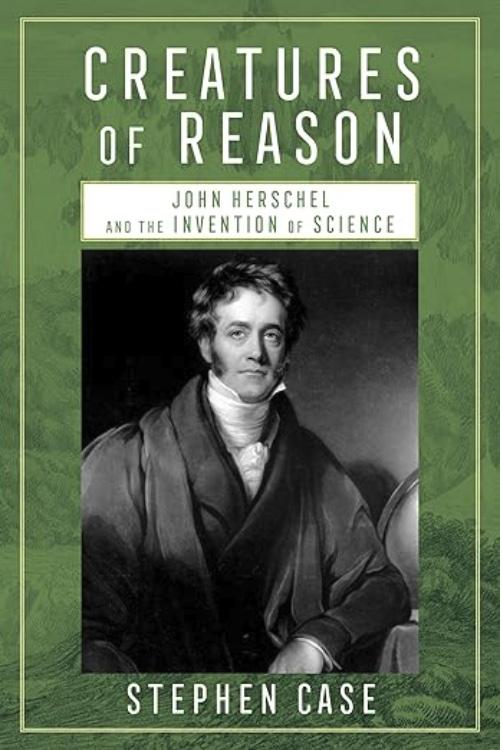
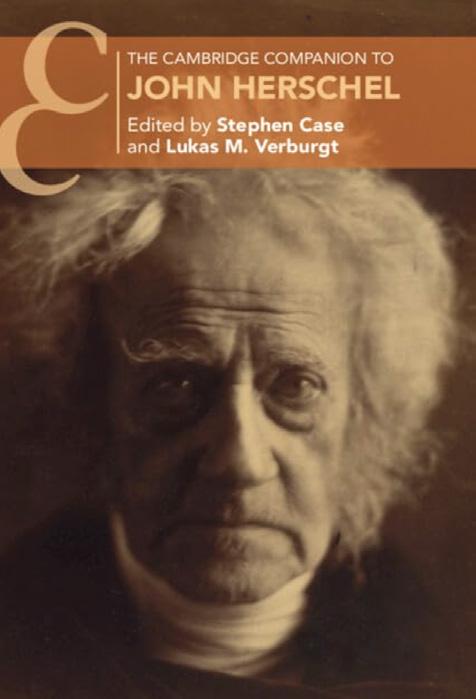





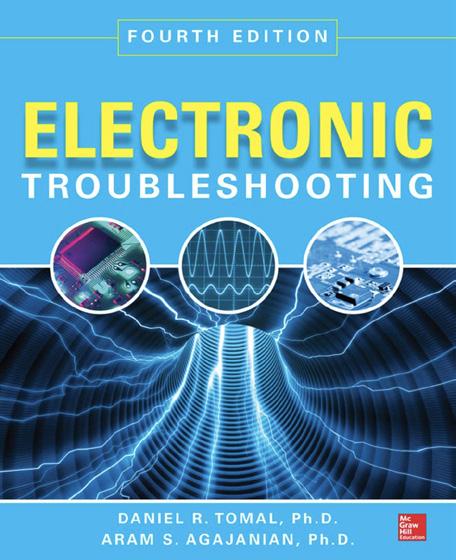



BOOKS PUBLISHED BY ONU STEM FACULTY
• Electronic Troubleshooting, Daniel R. Tomal and Aram Agajanian
• Technology for Classroom and Online Learning, Samuel M. Kwon, Daniel R. Tomal, and Aram S. Agajanian
• Flag Varieties: An Interplay of Geometric Combinatorics and Representative Theory, V. Lakshmibai and Justin Brown


• The Grassmannian Variety, V. Lakshmibai and Justin Brown
• Making Stars Physical: The Astronomy of Sir John Herschel, Stephen Case
• The Cambridge Companion to John Herschel, Stephen Case and Lukas M. Verburgt (editors)
• Mathematics for the Modern World, Dale K. Hathaway
• Mathematical Devotionals, Dale K. Hathaway


BOOKS BY MAX REAMS, PROFESSOR EMERITUS (GEOLOGY)
• Geology of Illinois State Parks
• Geology of Indiana State Parks
• Geology of Missouri State Parks
• Waterfalls in Illinois
• Ice Age Giant Mammals of the Midwest

ARAM AGAJANIAN
Professor
Department of Engineering
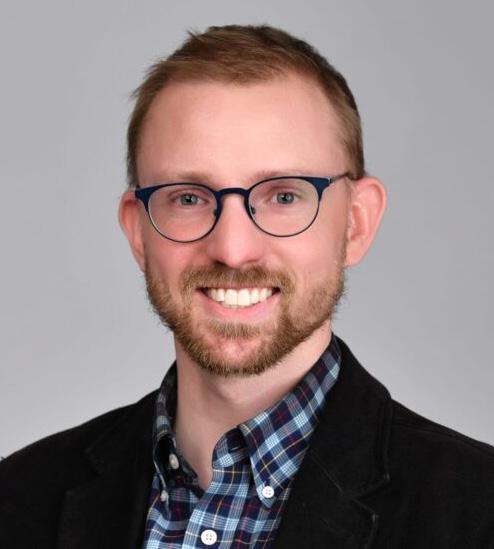
STEPHEN CASE
Professor, Department of Chemistry and Geosciences, Director, University Honors Program
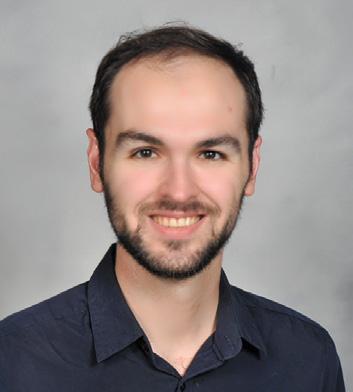
LUCAS HENDERSON
Assistant Professor Department of Chemistry and Geosciences

HAMMERSKJOELD (MUNYA) KATONGERA
Assistant Professor
Department of Mathematics and Computer Science

NICHOLAS BOROS
Professor Department of Mathematics and Computer Science

DANIEL GREEN
Professor Department of Mathematics and Computer Science

BRUCE HEYEN
Chair and Professor Department of Chemistry and Geosciences

DANIEL KENDER
Assistant Professor Department of Mathematics and Computer Science
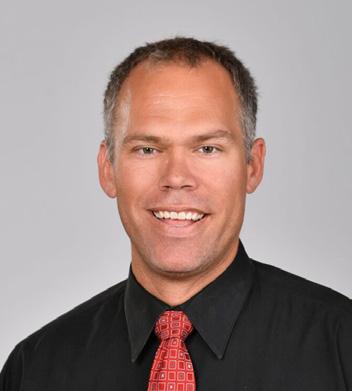
JUSTIN BROWN
Chair and Professor Department of Mathematics and Computer Science

WILLA HARPER Professor Department of Chemistry and Geosciences

RYAN HIMES
Professor Department of Biological Sciences
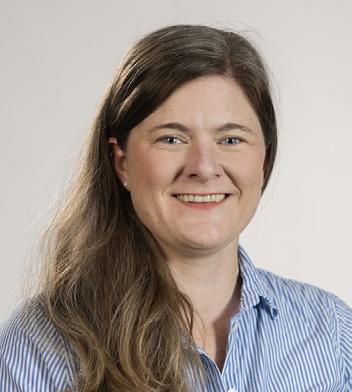
PARRY KIETZMAN
Associate Professor
Department of Biological Sciences

CHARLES CARRIGAN
Professor
Department of Chemistry and Geosciences

DALE HATHAWAY
Associate Dean, School of STEM, Professor, Department of Mathematics and Computer Science

DAVID HOEKMAN
Professor
Department of Biological Sciences

SEOK LEW
Professor
Department of Engineering

GREGORY LONG
Professor Department of Biological Sciences

JEFFREY RICE
Professor and Director of Cybersecurity and Computer Science, Department of Mathematics & Computer Science

NICHOLAS TROENDLE
Associate Professor Department of Biological Sciences

JONATHAN WEBER
Assistant Professor
Department of Engineering
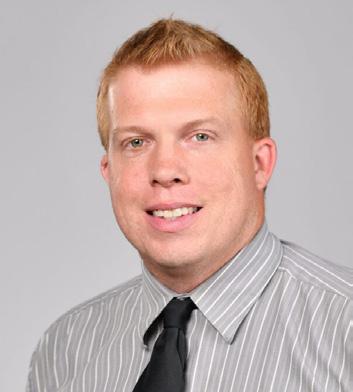
JEREMY LYLE
Associate Professor Department of Mathematics and Computer Science
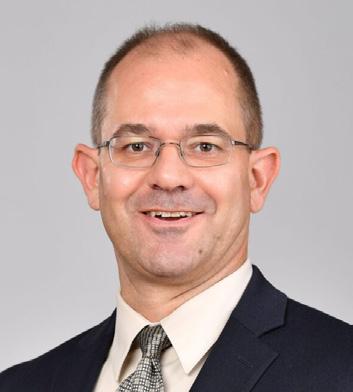
JOSEPH SCHROEDER
Professor Department of Engineering

NICOLE VANDER SCHAAF
Associate Professor Department of Biological Sciences

RYAN YOUNGER
Assistant Professor Department of Mathematics and Computer Science

SCOTT RAGAN
Chair and Associate Professor, Department of Engineering

DAN SHARDA Chair and Professor Department of Biological Sciences

AGGIE VELD
Professor Department of Biological Sciences

DARL RASSI
Associate Professor
Department of Mathematics and Computer Science

MADELINE SHEPLEY
Assistant Professor and Planetarium Director Department of Chemistry and Geosciences

MICHAEL WADE
Assistant Professor
Department of Engineering